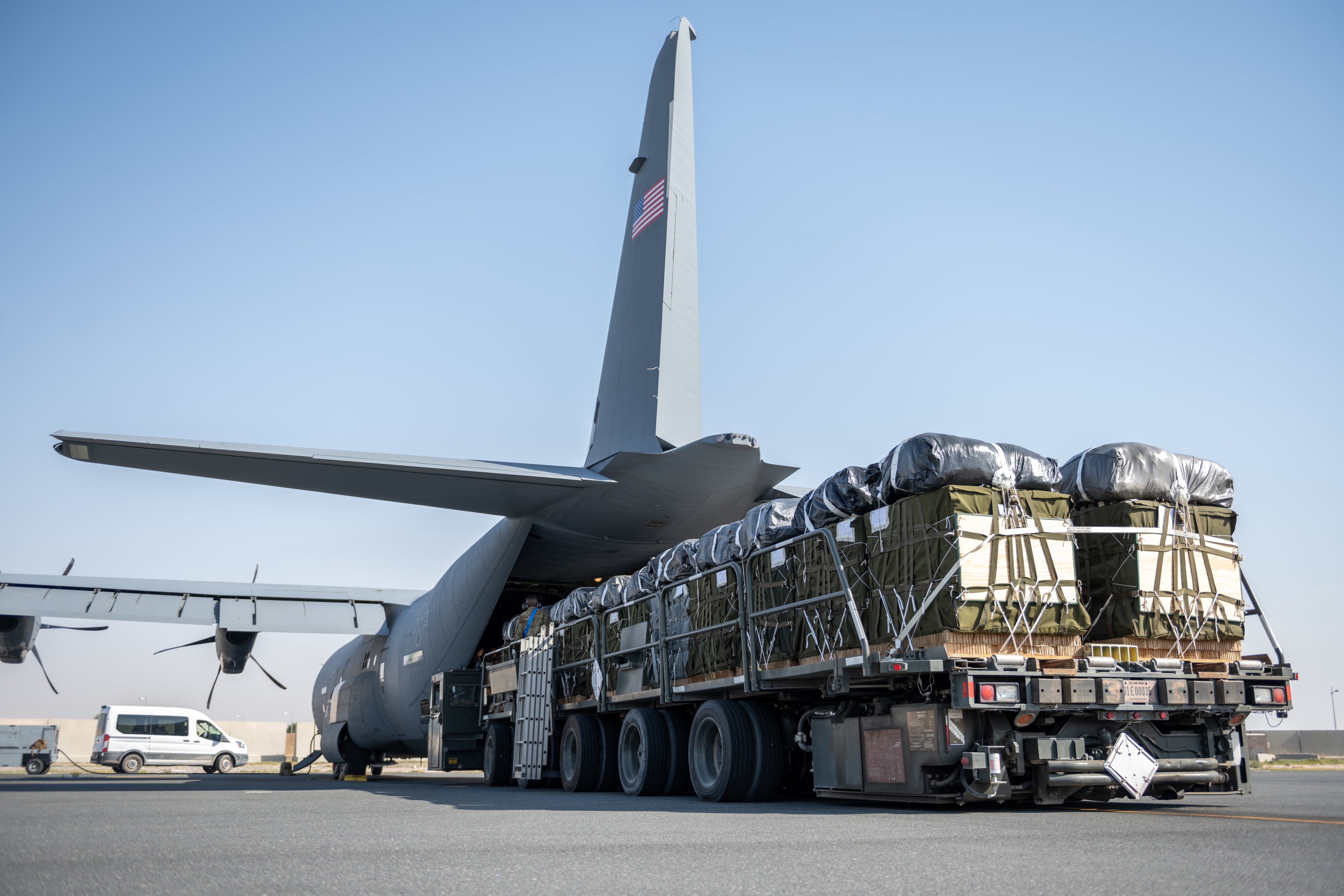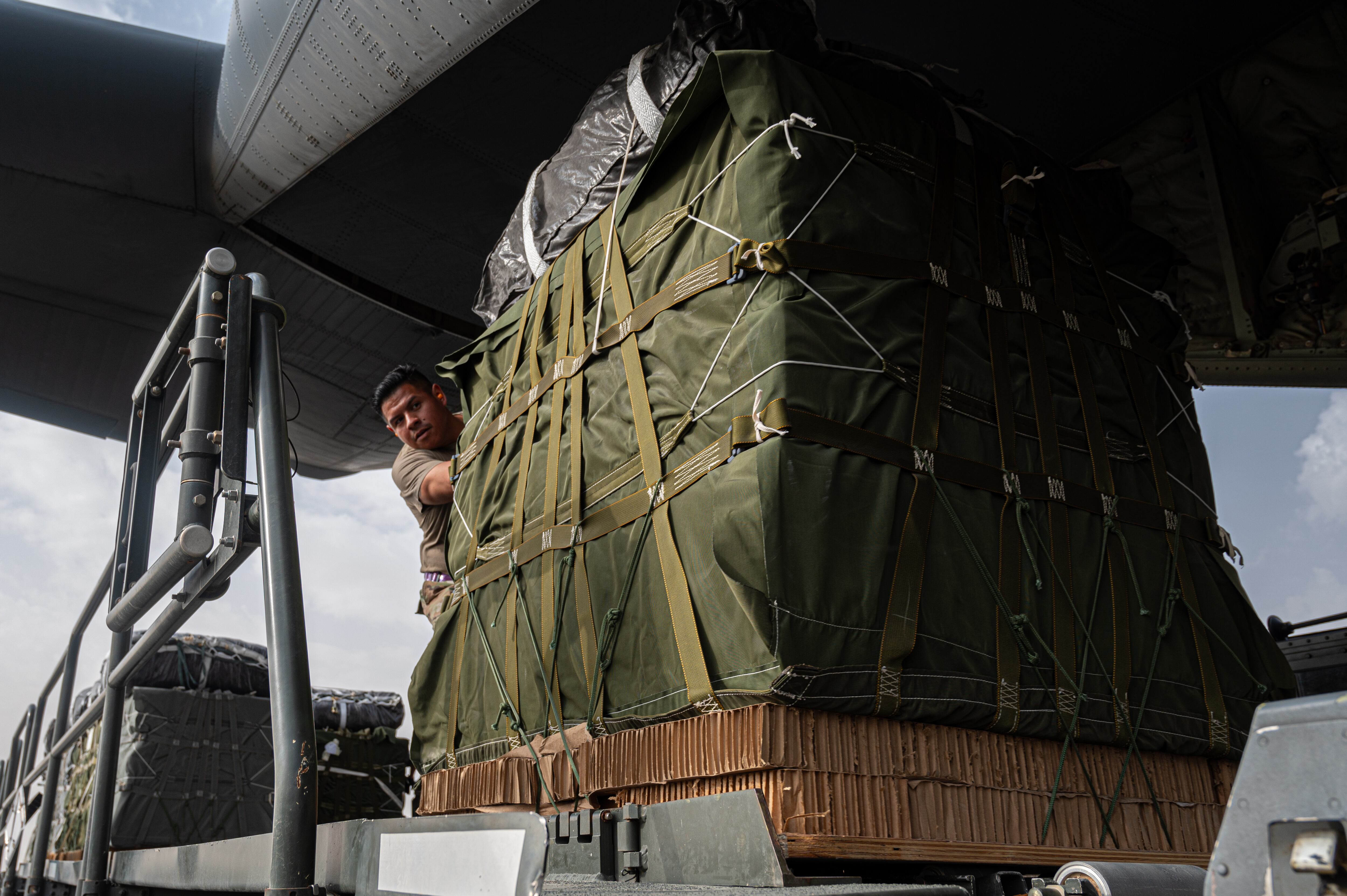The Air Force on Sunday resumed airdropping humanitarian aid into Gaza after pausing operations for more than a month as Israel’s invasion of the city of Rafah unfolded.
A C-130J transport aircraft assigned to the 41st Expeditionary Airlift Squadron, deployed from Little Rock Air Force Base, Arkansas, dropped 12,500 prepackaged military meals, Capt. Daniel de La Fé, a spokesperson for Air Forces Central Command, told Air Force Times Monday. The service said the mission included the Royal Jordanian Air Force and other coalition partners.
RELATED

The airdrop marks the Air Force’s 40th aid mission, comprised of 103 individual flights over the Gaza Strip, since the sorties began March 2. It’s also the service’s first since the Pentagon put humanitarian air missions on hold May 9, largely as the result of Israel’s strikes targeting suspected Hamas militant strongholds in the southern city of Rafah, according to Pentagon deputy press secretary Sabrina Singh has said.
“I’m extraordinarily proud of the hard work of our coalition airmen and soldiers who are accomplishing these airdrop missions,” Air Forces Central boss Lt. Gen. Derek France said in a statement. “I am also grateful for the integration and cooperation by regional and international partners who came together with us to provide hope to those in need.”
The flights resumed shortly after aid again began flowing through a U.S. military-constructed pier on a beach in Gaza, two weeks after it was damaged by high winds and heavy seas.
To date, the Air Force has delivered more than 1.2 million Meals, Ready-to-Eat and 150,000 bottles of water to Gaza, AFCENT said Monday. Multiple squadrons flying the C-130J Super Hercules and the C-17 Globemaster transport aircraft have participated in the drops, which come as the United Nations and aid groups warn of an unfolding famine in the Mediterranean enclave.
About three dozen personnel from the 437th Airlift Wing, including maintainers, intelligence specialists and other aircrew members, joined the mission in early March with two C-17s from Joint Base Charleston, South Carolina. The crews flew about a dozen missions before returning home in mid-April.
Capt. Benjamin See, a pilot with the 437th who flew some of those missions, called the experience humbling and surreal.
“It was a lot of just seeing what you’ve seen on the news, seeing Gaza, seeing buildings, and what was left of buildings, and then seeing people just down there waiting for the food that we’re delivering,” See told Air Force Times in an interview.
That’s a sentiment shared by Tech. Sgt. Brian Bell, a loadmaster with the 79th Rescue Squadron at Davis-Monthan Air Force Base, Arizona, which is deployed to U.S. Central Command with the HC-130J Combat King II.
As he’s stood in the back of the aircraft, unleashing aid packages and watching them fall to the ground, Bell has reflected on the enormity of the eight-month-long war, which had killed more than 36,000 people as of the end of May.
“I just remember thinking, ‘This is the most important thing I’ve done in my career,’” Bell said.
Courtney Mabeus-Brown is the senior reporter at Air Force Times. She is an award-winning journalist who previously covered the military for Navy Times and The Virginian-Pilot in Norfolk, Va., where she first set foot on an aircraft carrier. Her work has also appeared in The New York Times, The Washington Post, Foreign Policy and more.




